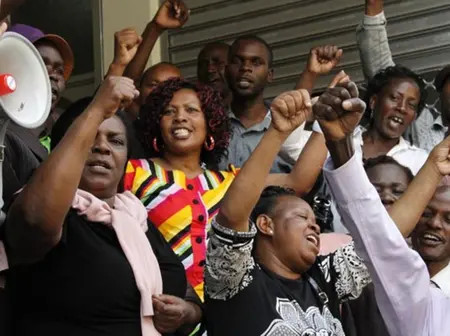Primary school teachers, popularly referred to as P1 teachers, will not be moved away from teaching in the lower grades even after undergoing the highly anticipated upgrading program sponsored by the World Bank.
The Teachers Service Commission (TSC), which has entered into a partnership with the World Bank to strengthen the capacity of teachers, clarified that the training program is not meant to pull teachers entirely out of the primary section but to equip them with additional competencies to also serve in junior school.
According to the Commission, the program seeks to address Kenya’s acute shortage of junior school teachers under the Competency-Based Curriculum (CBC) while ensuring that the primary section continues to benefit from the experience and stability that P1 teachers bring. Teachers who qualify for the upgrading will, therefore, straddle both levels, teaching junior secondary classes while still handling lessons in primary schools where necessary.
Currently, TSC is engaged in a massive exercise to verify and document the exact number of primary school teachers who meet the criteria for the upgrading program.
The process begins with teachers filling in an Excel-based template provided by the Commission. In this form, teachers are required to indicate their Kenya Certificate of Secondary Education (KCSE) mean grade as well as up to three subjects in which they attained a C+ (plus) and above.
Once the data is submitted, TSC officials will conduct a physical verification of documents to confirm the accuracy of the grades declared. This double-checking measure is designed to ensure transparency and credibility in the program. Teachers whose documents pass verification will be shortlisted and considered for the training phase.
The information collected is not just for vetting; it is also intended to guide planning. TSC will analyze the data to determine the number of teachers eligible for training, the subject combinations available, and the overall financial implications. The Commission has already signaled that the rollout of the program will commence in November 2025, marking a significant milestone in Kenya’s efforts to bolster junior school staffing.
Upon completion of the analysis, teachers will be informed of their subject combinations, the universities where they will undergo training, and the duration of their courses. Successful candidates will eventually be deployed to junior schools to help bridge the glaring shortage of educators at that level.
Kenya’s junior schools are grappling with a shortfall of over 72,000 teachers, a gap that has strained the implementation of CBC. As of now, TSC has managed to recruit 68,550 teachers, including 9,000 in the 2022/2023 financial year, 39,550 on permanent terms in 2024/2025, and an additional 20,000 intern teachers who reported in January this year.
To further ease the crisis, TSC is currently recruiting 24,000 more teachers on an internship basis, expected to be posted in January 2026. In addition, about 1,450 P1 teachers will be redeployed to junior schools by September 2025.
Education experts have hailed the upgrading program as a game-changer for thousands of P1 teachers. For years, many have remained stuck at the certificate level, with limited career progression prospects and low pay compared to their degree and diploma-holding counterparts.
“This isn’t just another training workshop. It is a life-changing opportunity for teachers to upgrade their academic standing, rise in rank, and improve their remuneration under the Career Progression Guidelines (CPG),” a senior TSC official noted.
Teachers who complete the program will be promoted from Job Group C1 to C2, unlocking better pay and benefits.
TSC has outlined two main categories of teachers who will benefit from the World Bank-supported initiative:
This group includes teachers who scored a mean grade of C+ or higher in KCSE and attained at least a C+ in two teaching subjects. Despite their strong academic”c performance, many never pursued further studies to acquire diplomas or degrees. TSC is now targeting them as prime candidates for training, recognizing both their potential and their long service in the profession.
The second category broadens eligibility by including teachers who scored a C plain overall but achieved at least a C+ in two teaching subjects. This recognition acknowledges subject-specific strengths, ensuring that talented teachers are not locked out of opportunities simply because of their overall KCSE grade.
However, the program will explicitly exclude teachers who already hold a diploma or degree qualifications, since the objective is to uplift those stuck at the certificate level.
To fast-track the process, TSC Sub-County Directors have instructed headteachers to provide details of eligible teachers in their schools. Heads of Institutions are required to submit teacher names, TSC numbers, school names, and sub-county information using the standardized Excel template.
This meticulous data collection underscores the seriousness with which the Commission is approaching the program. It is not merely an academic exercise but a strategic, well-funded initiative to reshape Kenya’s teaching landscape at both primary and junior school levels.
With training scheduled to kick off in November, thousands of teachers are now anxiously waiting to learn whether they qualify. For many, this represents the first real opportunity to advance academically and professionally without shouldering the heavy costs of private training.
By equipping P1 teachers with modern competencies while retaining their presence in primary schools, TSC and the World Bank hope to strike a delicate balance, strengthening junior school staffing without weakening primary education.
Ultimately, this program is more than a stop-gap measure; it is a long-term investment in Kenya’s human capital, promising to uplift not only the teaching workforce but also the quality of learning across the country.

Leave a Reply